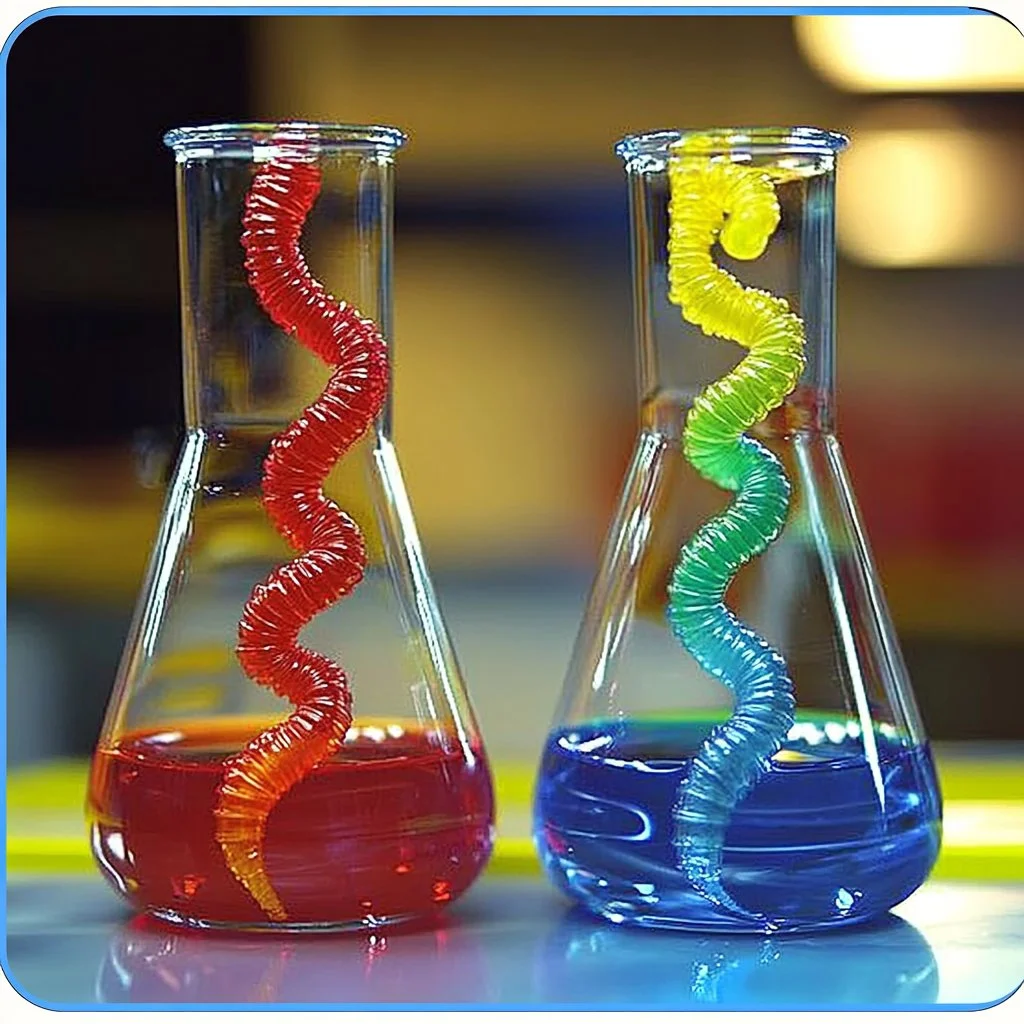Dancing worms is a fun and engaging chemistry experiment that captures the curiosity of both children and adults. This colorful and captivating demonstration employs simple materials to create the illusion of worms moving in dance-like motions. Through the combination of basic household ingredients and a little science, participants can witness fascinating chemical reactions firsthand. This experiment not only teaches scientific concepts such as density and chemical reactions but also offers a magical sensory experience as the “worms” wiggle and swirl. Whether you’re a parent looking to engage your children with a delightful STEM activity or a teacher eager to introduce chemistry in an enjoyable way, this experiment is a fantastic choice.
Why You’ll Love This Dancing Worms Chemistry Experiment:
- Educational: Teaches key scientific concepts, such as density and chemical reactions.
- Engaging: Captivates children’s attention with its lively visuals.
- Simple Materials: Uses common household items that are easy to find.
- Hands-On Learning: Encourages active participation and experimentation.
- Visually Appealing: Creates a vibrant and exciting spectacle.
Materials:
- 1 cup of baking soda
- 1 cup of white vinegar
- 1 cup of cornstarch
- Food coloring (various colors)
- Clear plastic container or a glass
- Spoon
- Measuring cups
Full Step-by-Step:
Preparing the Worm Mixture
- Combine Dry Ingredients: In a bowl, mix together 1 cup of baking soda and 1 cup of cornstarch.
- Add Food Coloring: Stir in a few drops of food coloring until the mixture reaches your desired color.
- Mix with Water: Gradually add water to the bowl until the mixture becomes a thick paste. Be careful not to make it too runny.
Create the Dancing Effect
- Prepare the Container: Pour the mixture into a clear plastic container or glass, spreading it evenly.
- Add Vinegar: Slowly pour 1 cup of vinegar over the mixture.
- Watch the Magic Happen: Observe as the reaction creates bubbles and the mixture begins to move, resembling dancing worms.
Tips & Variations:
- Customize Colors: Experiment with different food coloring combinations to create “rainbow worms.”
- Add Glitter: For an extra magical touch, add edible glitter to the worm mixture.
- Experiment with Ratios: Adjust the amount of baking soda or vinegar to see how it affects the dance.
Frequently Asked Questions:
Can I use apple cider vinegar instead of white vinegar?
Yes, apple cider vinegar will work, but it may affect the visual clarity of the reaction.
What should I do if the worms aren’t dancing as expected?
Ensure you are using the correct proportions of baking soda and vinegar. Too little vinegar can result in minimal reaction.
Can I store leftover worm mixture for later use?
It’s best to use the mixture immediately after preparation. The chemical reaction will diminish over time.
Is this experiment safe for young children?
Yes, all the ingredients used are safe. However, adult supervision is recommended for younger children.
Suggestions:
- Try incorporating a science lesson about gas production during the reaction.
- Create a themed party around the dancing worms experiment, where children can create their own worm variations.
- Document the experiment with photos or videos and share your results.
Final Thoughts
The Dancing Worms Chemistry Experiment is not just a delight to watch, but also a fantastic way to engage with and understand scientific principles. We encourage you to try this at home and share your versions or any variations you come up with in the comments below! Happy experimenting!
Print
Dancing Worms Chemistry Experiment
- Total Time: 10 minutes
- Yield: Multiple experiments
- Diet: N/A
Description
A fun and engaging chemistry experiment that creates the illusion of dancing worms using simple household ingredients and fascinating chemical reactions.
Ingredients
- 1 cup of baking soda
- 1 cup of white vinegar
- 1 cup of cornstarch
- Food coloring (various colors)
- Clear plastic container or glass
- Spoon
- Measuring cups
Instructions
- Combine Dry Ingredients: In a bowl, mix together 1 cup of baking soda and 1 cup of cornstarch.
- Add Food Coloring: Stir in a few drops of food coloring until the mixture reaches your desired color.
- Mix with Water: Gradually add water to the bowl until the mixture becomes a thick paste. Be careful not to make it too runny.
- Prepare the Container: Pour the mixture into a clear plastic container or glass, spreading it evenly.
- Add Vinegar: Slowly pour 1 cup of vinegar over the mixture.
- Watch the Magic Happen: Observe as the reaction creates bubbles and the mixture begins to move, resembling dancing worms.
Notes
Customize colors and add glitter for an extra magical touch. Adjust baking soda or vinegar amounts to see effect changes.
- Prep Time: 10 minutes
- Cook Time: 0 minutes
- Category: Educational Experiment
- Method: Mixing
- Cuisine: N/A
Nutrition
- Serving Size: N/A
- Calories: 0
- Sugar: 0g
- Sodium: 2mg
- Fat: 0g
- Saturated Fat: 0g
- Unsaturated Fat: 0g
- Trans Fat: 0g
- Carbohydrates: 0g
- Fiber: 0g
- Protein: 0g
- Cholesterol: 0mg

